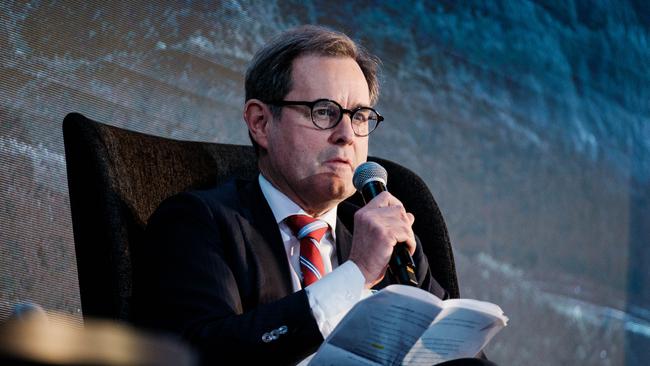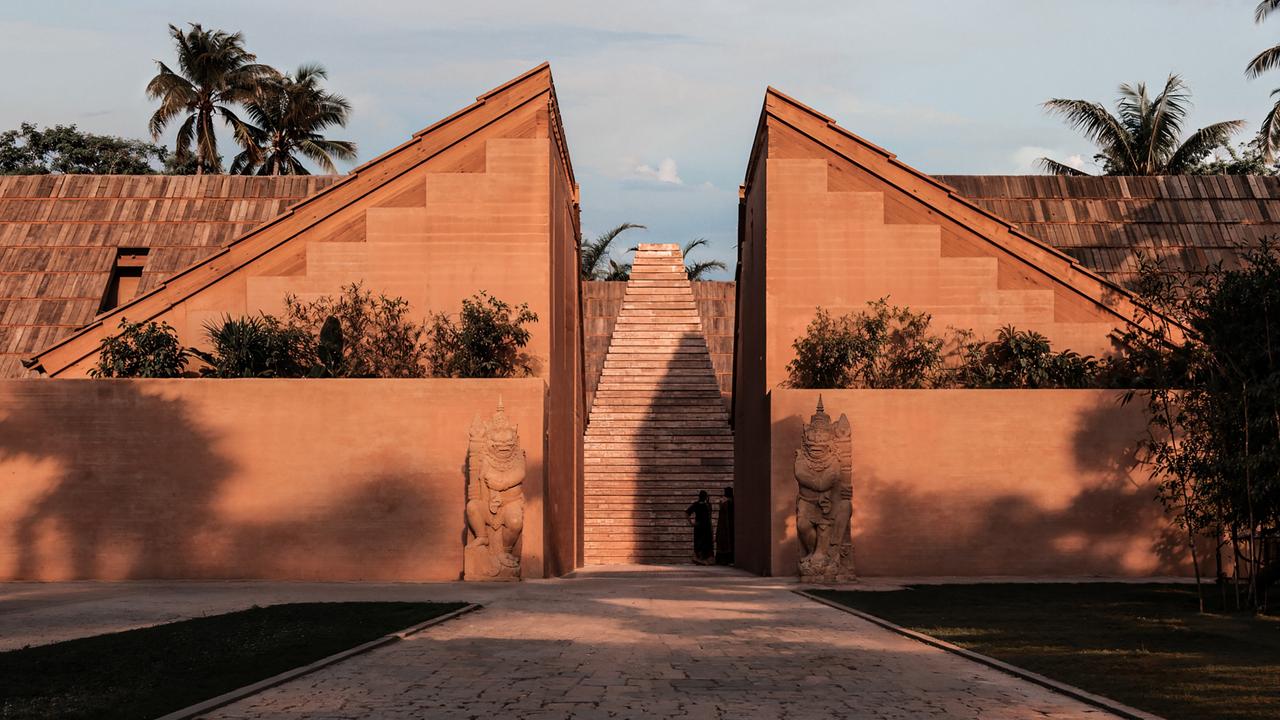Australia ‘behind the pace’ on 2030 renewables target: CEFC
Authorities are worried about the huge level of renewables investment still required, with each annual shortfall hiking the risks of electricity blackouts.

Business
Don't miss out on the headlines from Business. Followed categories will be added to My News.
Australia is “well behind the pace” to hit Labor’s target of hitting 82 per cent renewables in the power grid by 2030, the nation’s green bank has warned, with a major wind farm needing to be built each month until the end of the decade to hit the ambitious goal.
Labor has set a goal of tripling renewables capacity to 82 per cent by 2030.
However, authorities are worried about the huge level of investment still needed with each annual shortfall hiking the risks of electricity blackouts as coal plants like NSW’s Liddell shut their doors after a half-century of operations.
Over $120bn of spending is needed to finance new solar, wind, transmission and energy storage projects by 2030, according to the Australian government-backed Clean Energy Finance Corporation, but current investment is falling short of targets.
“In order to meet these very ambitious goals around renewable energy and emissions, we need to install an estimated 29 gigawatts of large scale renewables [by 2030],” CEFC chief executive Ian Learmonth told a CEDA forum on Monday.
“That’s about 3.6 gigawatts a year or 300 megawatts a month. That’s a substantial wind farm a month.”
Current investment levels were lower than required to hit the Albanese government’s target.
“To give you an understanding of the uplift required, last year in terms of large scale wind and solar we only installed 2.3GW and something like 2.7 gigawatts of solar rooftop so we are still well behind the pace,” Mr Learmonth said.
“Recent budget initiatives will provide the CEFC with $19bn to help with Rewiring The Nation. It is only a fraction of the capital needed.”
Former Snowy Hydro chief executive Paul Broad attacked Chris Bowen earlier in May and branded Labor’s target to reach 80 per cent renewables by 2030 as “bullshit” after Snowy 2.0 was hit with a fresh two-year delay.
Officials say five major projects covering 10,000km to connect up new renewables supplies need to be built “as urgently as possible” as fears grow that new supplies may be stranded if new developments are not delivered on time.

Federal Energy Minister Chris Bowen has also conceded a $20bn plan to rebuild Australia’s electricity transmission networks faces labour market strains and challenges getting farmers and landowners onside.
Labor has prioritised a string of vast power grid projects to deliver clean energy to users including Tasmania’s Marinus Link, Victoria’s VNI West and NSW’s HumeLink.
Still, Mr Bowen said he recognised there were a series of hurdles to deliver its transmission goals in tight time-frames.
“In relation to transmission, we’re of course not the only country in the world doing this. So supply chains are particularly tight. We’re competing with projects in an environment of very tight construction schedules,” Mr Bowen told the forum.
“Of course managing the labor market is an important challenge as well. It’s a good challenge to have as many jobs will be created when our construction is fully up and running. But we have to acknowledge that’s an issue to be managed.”
Getting farmers and landowners on side also poses a challenge although Mr Bowen said communities were not opposed to renewables.
“It would be easy, but wrong to dismiss these concerns just as nimbyism. But in my experience most concerned community members are not anti-renewables, not anti-transmission and not anti-progress. Nor in most cases, are they opposed to the projects going ahead if their concerns are adequately addressed and they have a proper say.”
Mr Bowen has proposed a raft of changes to the regulatory investment test that governs electricity transmission, saying it was too slow and cumbersome as a tool for a major rebuild of the power grid.
Australia’s existing electricity transmission network was at gridlock and struggling at times to move new volumes of solar and wind to users, the power grid operator said.
The curtailment of renewable generation has surged by 40 per cent from a year ago in Victoria, NSW and parts of Queensland, according to the Australian Energy Market Operator, underlining the need for $20bn of transmission investment.
“The transmission links that run between states are maxing out,” AEMO chief executive Daniel Westerman said. “From January to March, the links from Victoria to NSW and Tasmania were at their limits for 42 per cent and 57 per cent of the time respectively.
“And during those hours when the sun is producing free electrons, the links were binding for two-thirds of the time to NSW, and over 80 per cent of the time to Tasmania. In other words, parts of our energy highway are at gridlock.”
The AEMO boss conceded challenges winning over communities where transmission will be built.
“There are landowners out there who coexist with both renewable energy on their farms and transmission,” Mr Westerman said. “And there are also parts of the community who are legitimately worried. And so it’s not just one size fits all. Communities are not just one. They are lots of individuals and we’ve just got to recognise their concerns and address them one by one.”
More Coverage
Originally published as Australia ‘behind the pace’ on 2030 renewables target: CEFC





